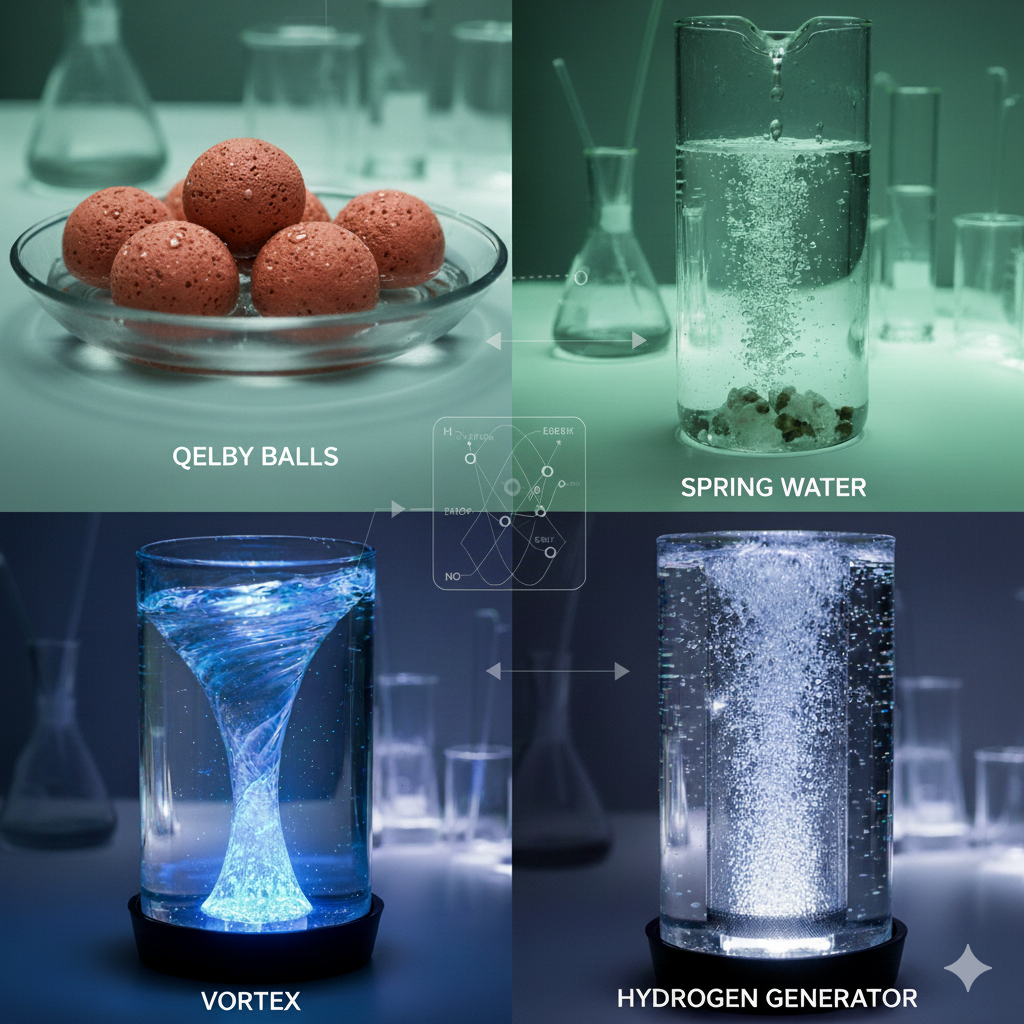
Why QELBY® Ceramic Balls Are the Best Way to Structure Water
Share
I think by now most of us know that water is life, but not all water is created equal. While we focus on how much water we drink, new science shows that how water is structured determines how well our cells can actually use it. This is where structured water (also called EZ water or exclusion zone water) comes in.
From vortex devices to hydrogen water machines, there are many ways people attempt to restructure their water. But when it comes to long-term effectiveness, sustainability, and cellular impact, QELBY® ceramic balls are in a class of their own. Let’s dive into the science.
What Is Structured Water?
Structured water (H₃O₂) is water organized at the molecular level into a hexagonal lattice. Unlike chaotic tap or bottled water, structured water mimics the water found in nature, glacial melt, spring water, and inside fruits and vegetables.
Why does this matter?
Your cells don’t just absorb water—they interact with it. Structured water:
Improves cellular hydration and nutrient absorption
Enhances detoxification and circulation
Supports mitochondrial energy production
Promotes stronger zeta potential, keeping nutrients suspended and bioavailable
In short, structured water fuels your cells more efficiently
Ways People Structure Water
1. Vortexing Devices
These mimic the swirling motion of mountain streams. Vortexing helps temporarily organize water molecules.
Pros: Natural process, can be visually appealing.
Cons: Requires effort or electricity. Structure is short-lived.
2. Magnetic & Electromagnetic Devices
Magnets or EM fields realign water clusters.
Pros: Non-invasive, some studies show benefits.
Cons: Expensive, structure fades quickly, and limited peer-reviewed validation.
3. Hydrogen Water Machines & Tablets
Infuse water with hydrogen gas, known for its antioxidant properties.
Pros: Hydrogen can reduce oxidative stress and support performance.
Cons: Costly machines, ongoing consumables. Focuses on hydrogen infusion, not true structuring.
4. Natural Sources (Springs, Glacial Melt)
Found in pristine environments.
Pros: Ideal form of structured water.
Cons: Not practical for daily living.
QELBY® ceramic balls combine mineral physics, somatid technology, and modern science into a simple, permanent solution.
1. Somatid Technology
Somatids are microscopic, resilient life forms encoded into QELBY® ceramics.
When placed in water, they:
Provoke the release of free electrons
Restructure water into hexagonal EZ water
Enhance oxygen delivery and cellular voltage
2. Stronger Zeta Potential
Zeta potential is the electrical charge that keeps nutrients suspended in water. QELBY® water holds a negative charge of around –37 mV, improving colloidal stability and nutrient bioavailability.
3. Direct Cellular Benefits
Drinking QELBY®-structured water supports:
Mitochondrial efficiency and ATP production
Reduced inflammation and oxidative stress
Better hydration, detox, and mental clarity
Fewer headaches and migraines
4. Practical Advantages
One-time purchase, lasts indefinitely
No electricity, filters, or refills
Works in glass, ceramic, or stainless steel containers
Eco-friendly: no plastic waste
Safe for humans, pets, and even agriculture
Dr. Gerald Pollack’s research shows that EZ water forms next to hydrophilic surfaces and carries a strong negative charge, acting like a biological battery. In cell studies, structured water has been shown to increase mitochondrial membrane potential by up to 36%, directly boosting energy production.
This makes QELBY®-structured water not just hydration, but an upgrade for cellular health.
The Smarter Way to Hydrate
You can vortex, magnetize, or hydrogen-charge your water. But none are as permanent, effective, or backed by mineral and biological science as QELBY® ceramic balls. They don’t just mimic nature; they bring structured water into your daily routine effortlessly.
Hydration isn’t just about quantity; it’s about quality. With QELBY®, every sip works smarter for your cells.
References
Pollack, G. H. The Fourth Phase of Water: Beyond Solid, Liquid, and Vapor. Ebner & Sons, 2013.
Rojas, M., et al. (2024). “Structured water and its effects on cellular hydration and nutrient bioavailability.” Journal of Cellular Physiology.
Wu, X., et al. (2024). “XQZ3, a novel polysaccharide from Chlorella pyrenoidosa, suppresses lung adenocarcinoma progression by restraining mitochondrial bioenergetics via HSP90/AKT signaling pathway.” Frontiers in Oncology.
Merchant, R. E., & Andre, C. A. (2001). “A review of recent clinical trials of the nutritional supplement Chlorella pyrenoidosa in the treatment of fibromyalgia, hypertension, and ulcerative colitis.” Alternative Therapies in Health and Medicine.
Bito, T., et al. (2020). “Potential of Chlorella as a dietary supplement to promote human health.” Nutrients.
Naessens, G. (1993). Somatidian Microorganisms and Their Role in Cellular Regeneration. (Foundational research on somatids)
